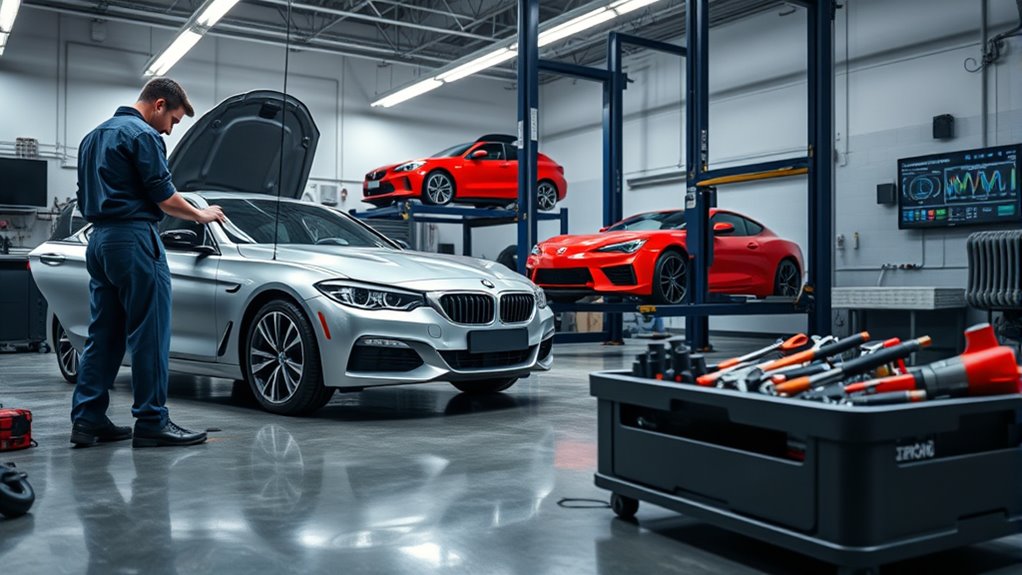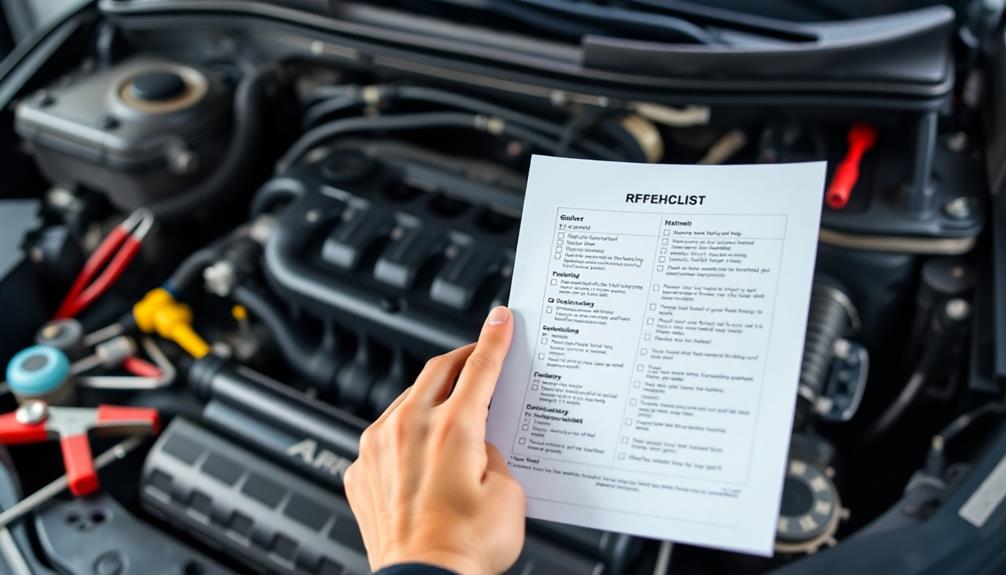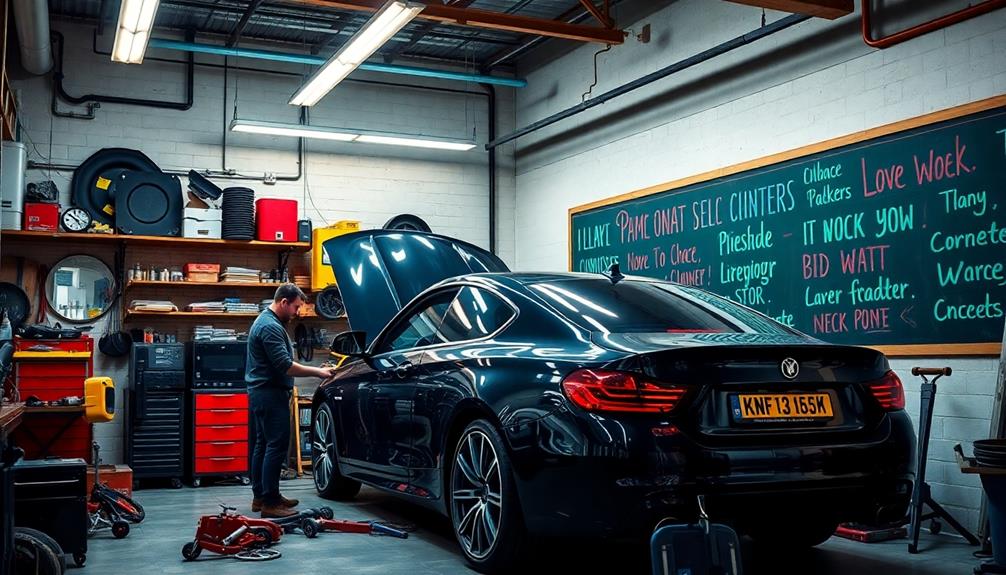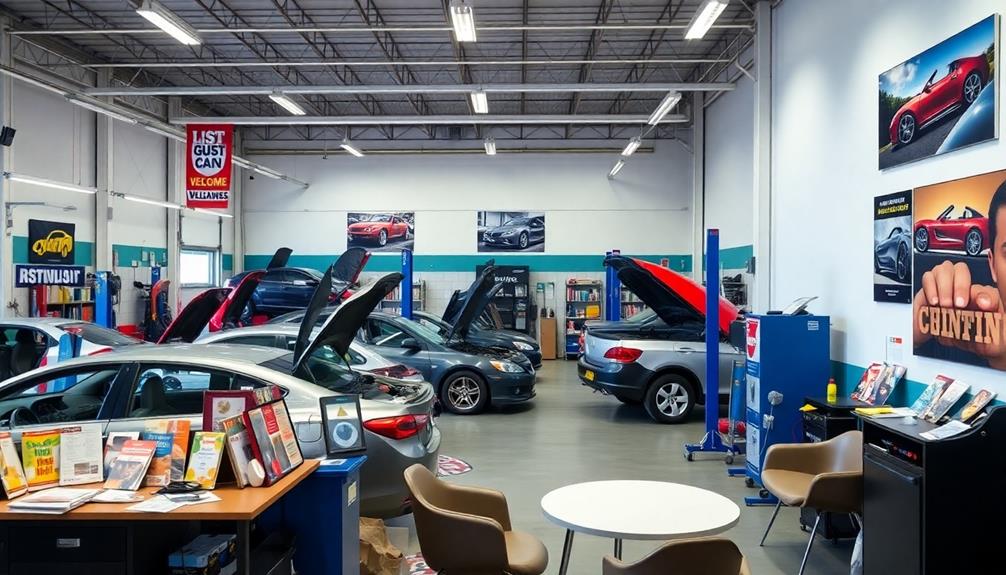When shops triage vehicles, you start with a thorough inspection to spot critical issues like leaks, warning lights, or safety concerns. You assess each problem’s severity to prioritize urgent repairs first, such as brake or engine issues, while scheduling less urgent ones later. Identifying parts that need replacement helps plan repairs efficiently. Clear communication and organized records make certain everyone stays informed. Keep these steps in mind, and you’ll better understand how shops manage vehicle triage step by step.
Key Takeaways
- Conduct a detailed initial inspection to identify obvious damages and potential issues quickly.
- Prioritize repairs based on severity, addressing critical safety concerns first.
- Identify parts needing replacement early to streamline repair planning and parts ordering.
- Communicate findings clearly to technicians and customers, emphasizing urgent versus non-urgent issues.
- Use skilled observation and system knowledge to assess problems efficiently and assign repair sequences.

Triage vehicles play a crucial role in modern auto repair shops by quickly evaluating and prioritizing incoming vehicles. When a car arrives, your first step is to perform a thorough vehicle inspection. This initial assessment helps you identify the specific issues that need immediate attention versus those that can wait. You look for obvious signs of damage, fluid leaks, worn parts, or warning lights on the dashboard. By conducting an effective vehicle inspection, you gather critical information that guides your next steps and ensures no problem goes unnoticed.
Once you’ve completed the inspection, you determine the severity of each issue. If the vehicle has a critical problem, like brake failure or engine overheating, it gets prioritized for immediate repair. For less urgent concerns, such as minor cosmetic damage or worn-out filters, you schedule them accordingly. This triage process allows your team to allocate resources efficiently, minimizing downtime for the customer and maximizing shop productivity.
Prioritizing critical issues like brake failure ensures efficient repairs and minimizes customer downtime.
During the evaluation, you also identify parts that require replacement. This could involve worn brake pads, faulty sensors, damaged hoses, or broken belts. Your goal is to provide an all-encompassing plan that includes necessary parts replacement, ensuring the vehicle is restored to safe, reliable condition. By quickly pinpointing which components need replacing, you save time and avoid unnecessary delays later in the repair process. Keeping a detailed list of parts needed helps you streamline ordering and inventory management, so you’re ready to proceed without hold-ups.
As you move from inspection to parts replacement, communication becomes key. You relay your findings to the technician or customer, explaining what’s urgent and what can wait. This transparency helps set realistic expectations and builds trust. Efficient triage also involves maintaining organized records of each vehicle’s condition and the repairs needed. This documentation supports future diagnostics and provides a clear history of service, preventing redundant inspections or missed issues down the line.
Your ability to triage vehicles effectively depends on a combination of sharp observation, quick decision-making, and thorough knowledge of vehicle systems. Using vehicle system expertise enables you to identify problems more accurately during inspection. By swiftly conducting vehicle inspections and accurately identifying parts that need replacement, you keep the repair process smooth and efficient. This approach ensures that each vehicle receives the proper attention in the right sequence, reducing repair time and increasing customer satisfaction. Ultimately, your skill in triaging vehicles keeps the shop running smoothly, allowing you to handle more cars daily while maintaining high standards of quality and safety.
Frequently Asked Questions
How Do Shops Prioritize Vehicle Repairs During Peak Hours?
During peak hours, you prioritize vehicle repairs by quickly evaluating each car’s condition through vehicle inspection to identify urgent issues. You then check parts inventory to guarantee necessary components are available for high-priority repairs. By focusing on critical repairs first and efficiently managing your parts stock, you keep the workflow smooth, minimize wait times, and ensure customer satisfaction amidst busy periods.
What Criteria Determine a Vehicle’s Triage Category?
You determine a vehicle’s triage category based on its condition and repair urgency. If your vehicle shows critical issues affecting safety or functionality, it gets high priority. Moderate problems that need attention but aren’t urgent fall into a lower category. You assess how soon repairs are needed and the severity of the condition, ensuring urgent repairs are handled first to minimize downtime and maintain safety.
How Are Triage Vehicles Equipped for Different Repair Types?
You’ll find triage vehicles equipped with diagnostic tools and repair kits tailored to specific repair types. For electrical issues, they carry advanced diagnostic devices and wiring repair kits. For engine repairs, they include compression testers and engine parts. Bodywork jobs get sanding tools and paint supplies, while tire repairs feature pneumatic tools and patch kits. This specialized equipment allows you to quickly address various vehicle problems on-site, ensuring efficient and effective repairs.
What Training Do Staff Receive for Triaging Vehicles?
You receive thorough staff training focused on vehicle assessment to accurately identify repair needs. This training covers safety protocols, diagnostic procedures, and prioritization techniques. You learn how to quickly evaluate vehicle conditions, determine repair urgency, and guarantee the right resources are allocated. Through hands-on practice and ongoing education, you become proficient in triaging vehicles efficiently, helping the shop manage workflow smoothly and deliver timely repairs.
How Is Customer Communication Managed During the Triage Process?
Think of customer communication during triage as a lighthouse guiding ships safely. You use clear updates through multiple communication channels like texts, calls, or emails to keep customers informed. You actively listen to their feedback, address concerns promptly, and guarantee transparency at each step. This way, customers feel valued and reassured, turning a potentially stressful process into a smooth journey, much like a lighthouse illuminating the way.
Conclusion
Understanding how shops triage vehicles helps you appreciate their efficiency. Did you know that a well-organized triage system can reduce vehicle turnaround time by up to 30%? By prioritizing repairs and streamlining processes, shops make certain quicker service and happier customers. Next time you visit, you’ll see how this behind-the-scenes system keeps things running smoothly. It’s a smart approach that saves everyone time and money—making your experience better every visit.









